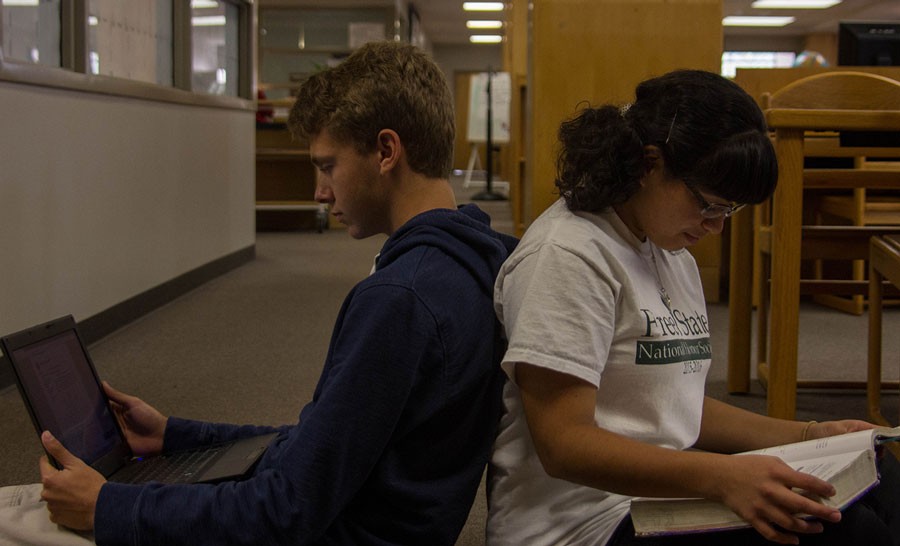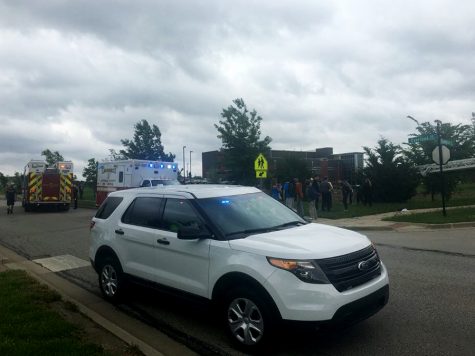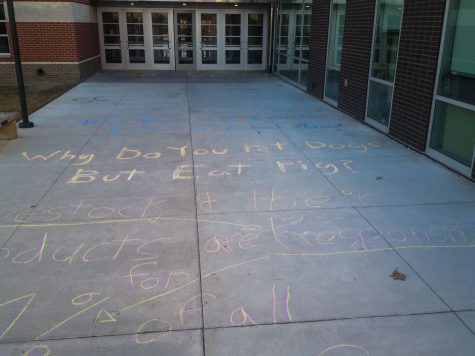Students, teachers push back on use of online textbooks
Students have differing takes on the initiative to use more digital textbooks. Junior Cooper Rasmussen has not taken many classes with an online textbook even though he prefers to use them. “I like using online textbooks because you don’t have to carry around a textbook,” Rasmussen said. “It’s way more convenient.”
Junior Luke Winchester logs out of Cengage.com. He attempts to log in again. He shuts down his laptop and considers throwing it at the wall. The AP Chemistry digital textbook website is malfunctioning again, and Winchester is not surprised.
“I think [online textbooks are] great if I forgot my textbook in my locker or something and I need to do homework, but I find them very difficult to use a lot of the time,” Winchester said.
The transition from hard copy textbooks to digital editions at the start of the year threw students into a seemingly unplanned adjustment period due to the technology disparities among the student body and websites or apps used.
“We can’t wait a few weeks for [issues] to get resolved,” AP U.S. History teacher Jordan Boyd said. “We have a chapter a week and we cannot deviate from that schedule.”
Informed of the transition at the end of the last school year, history and science classes were the main targets for online editions. Speaking up through the chain of command takes time for teachers when difficulties arise. Additionally, unreliable internet access or not having a computer at all are roadblocks students are often afraid to come forward about.
“There’s the perception that the student body is richer and wider than it really is,” Boyd said. “And there are so many problems with that mindset going forward. There’s a lot of economic diversity and cultural diversity here.”
More than just lack of access, some student’s preferred learning styles are not always conducive to an online textbook.
“It stresses me out too because you can’t flip through the book as easily and I’m a very visual learner,” junior Sabrea Platz said. “I memorize where stuff is on the pages and and you can’t do that with online textbooks.”
When it comes time to read thirty or more textbook pages, even those with access were hesitant.
“Personally, it hurts my eyes to stare at a screen for that long when I’m reading something,” Winchester said. “[Also] I put bookmarks where the solubility table is or where my reactants chart is [in the physical book] … It’s helpful to know where that is and just be able to open up to the bookmark.”
Taking both AP Chemistry and AP U.S. History, Platz was was given two online textbooks.
“I talked to my teacher, I got a note from my doctor and I got it signed by my parents that said I needed [a physical textbook], because it’s true,” Platz said. “It was causing me to get migraines and I can’t handle that with the classes I’m taking.”
Platz noted that had she received physical textbooks from the start, she would not have visited the optometrist.
In the first few months of the school year, both teachers and students alike found additional ways around the online textbooks.
Extra physical copies were checked out to students despite the push to go online and PDFs of chapters were put on websites.
“You could tell that the teachers were very annoyed with [the on- line textbooks],” Platz said. “They didn’t like it as much as we did …. a lot of people were unfairly angry at the teachers, even though they couldn’t do anything about it. In both of my classes, the teachers made sure we really could get access to the online textbook.”
As the district attempts to adapt to this change, more access is being provided.
“Many students with problems have either been provided with a laptop and wireless hotspot, we have a couple AP students that took us up on that, or they have a physical textbook,” Boyd said.
Teachers and students alike are working through the transition. The way the online textbooks were introduced, rather than the format itself, may actually be the enemy.
“Instead of just saying we give you a classroom set and then they have their online book to use at home, give them an option between using both and then just gradually try and pull away from doing that,” Winchester said.
Winchester noted that the online textbook has its plus sides, including the ability to turn in homework online and added resources. Unfortunately, with not all students able to access the online editions, not all resources necessary for AP students are readily available. Boyd’s priority is adapting as fast as possible in order to preserve learning.
“I just want my kids to learn AP and to learn to love history, and any way that I do that, I’m going to,” Boyd said.
Your donation will support the student journalists of Lawrence Free State High School. Your contribution will allow us to purchase equipment and cover our annual website hosting costs.










